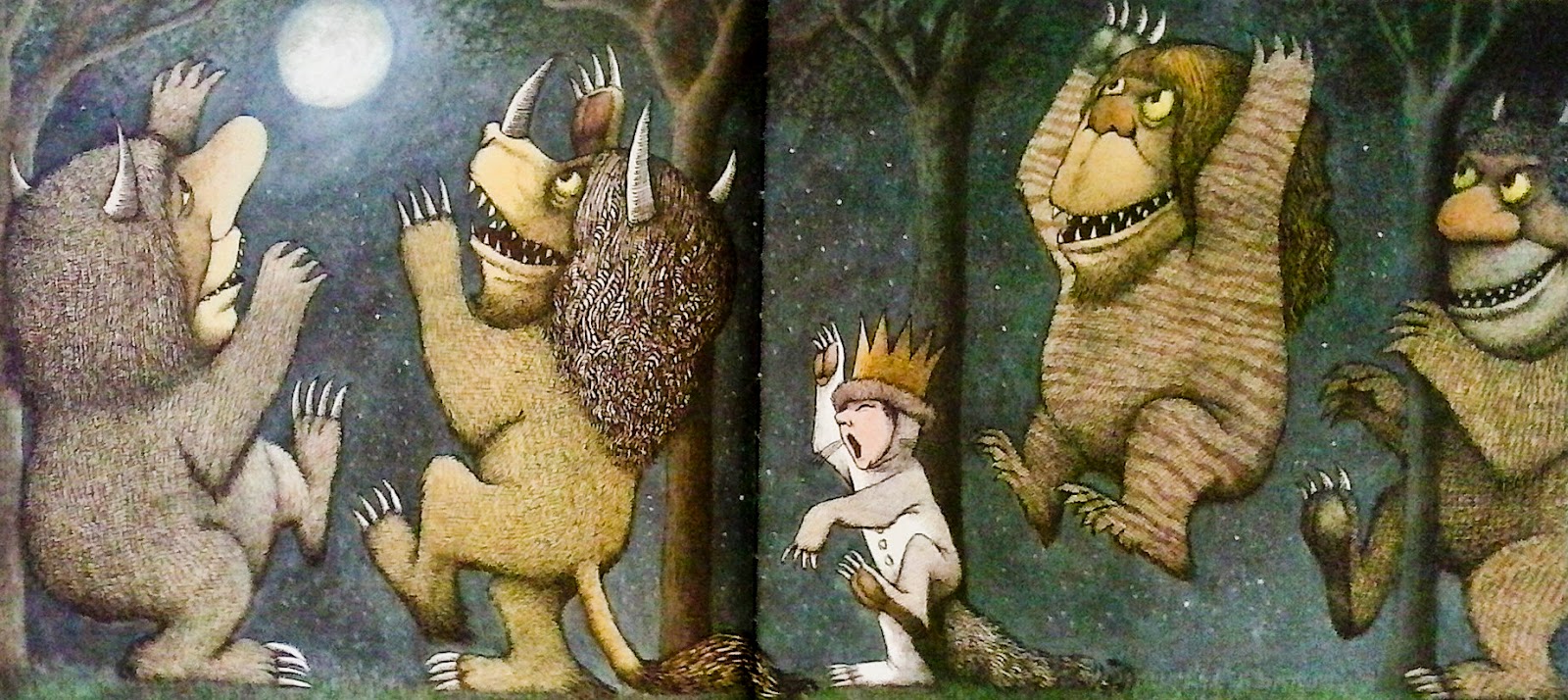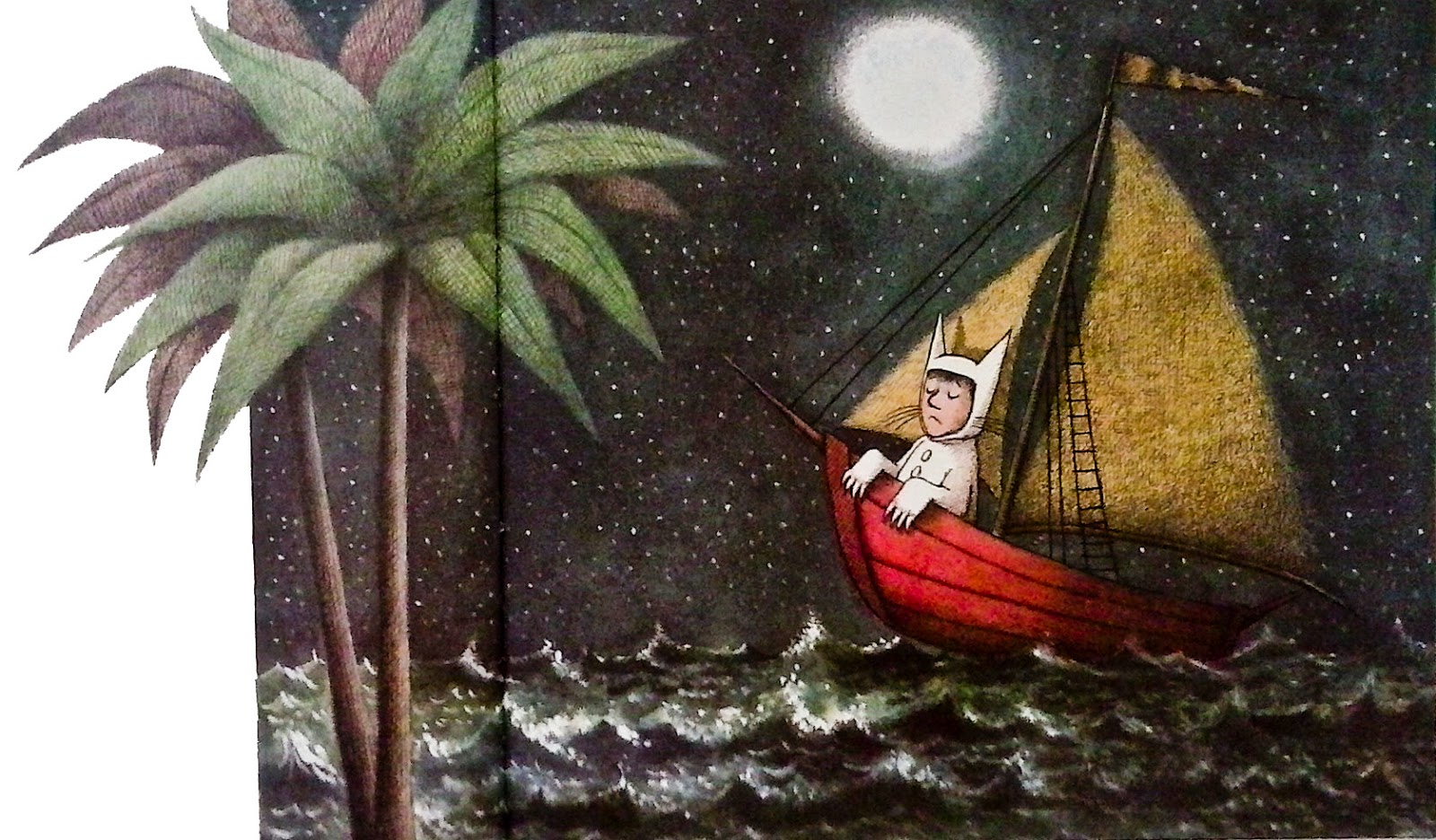Where the Wild Things Are is a story about a child coming to
grips with his emotions. Max is truly a terror and is punished for being so.
Alone in his room, Max creates an alternate reality complete with tumultuous
seas, sharp toothed monstrous Wild Things and deep dark forests. In this
reality Max is King and enjoys romping around creating chaos, that is until he
craves the comforts of home.
Where the Wild Things Are is hailed as a psychological masterpiece
in its delivery of an angry young boy and his outrageous imagination; exploring
the realm of dangerous possibilities in the comfort and safety of his own home. It
was different than any other picture book written during this time simply
because Sendak was concerned with the honest emotional lives of the children he
was writing for. Again, much like Silverstein, he was creating a world
authenticated by his own interpretations of childhood emotion.
According to the Rolling Stone Magazine (issue #229, 1976),
psychologist and writer Bruno Bettelheim warned parents not to purchase Sendak’s
Where the Wild Things Are because, “… Little Max’s dreamlike foray into the
world of monsters would scare children, and that Max’s rebellion against adult
authority was psychologically harmful.” It was subsequently banned heavily in
the Southern States and numerous libraries nationwide in the first year of its
release. This did not stop the book from selling millions of copies and earning Sendak a Caldecott Medal for his work.
Perhaps Sendak’s rebuttle came in the form of his acceptance
speech for his 1964 Caldecott Medal, in
which he stated:
“ [There are] games children must conjure up to combat an awful fact of childhood: the fact of their vulnerability to fear, anger, hate, frustration--- all the emotions that are an ordinary part of their lives and that they can perceive only as ungovernable and dangerous forces. To master these forces, children turn to fantasy: that imagined world where disturbing emotional solutions are solved to their satisfaction. Through fantasy, Max, the hero of my book, discharges his anger against his mother, and returns to the real world sleepy, hungry and at peace with himself…. It is through fantasy that children achieve catharsis. It is the best means they have for taming Wild Things. It is my involvement with this inescapable fact of childhood --- the awful vulnerability of children and their struggle to make themselves King of all Wild Things--- That gives my work whatever truth and passion it may have.”
Sendak’s creative visions, truth and passion have changed the picturebook world forever. It is still a much beloved tale enjoyed by many children and, because of it's sincerity, remains as relevant in our contemporary world of today as it was when it was first published. I believe it will remain so indefinitely.
Thanks for reading along with me. As always, join us at Etsy, FaceBook and Tumblr.
Also by:
The Juniper Tree (Illustrated by Sendak)
A Kiss for Little Bear (Illustrated by Sendak)



















No comments:
Post a Comment
Note: Only a member of this blog may post a comment.